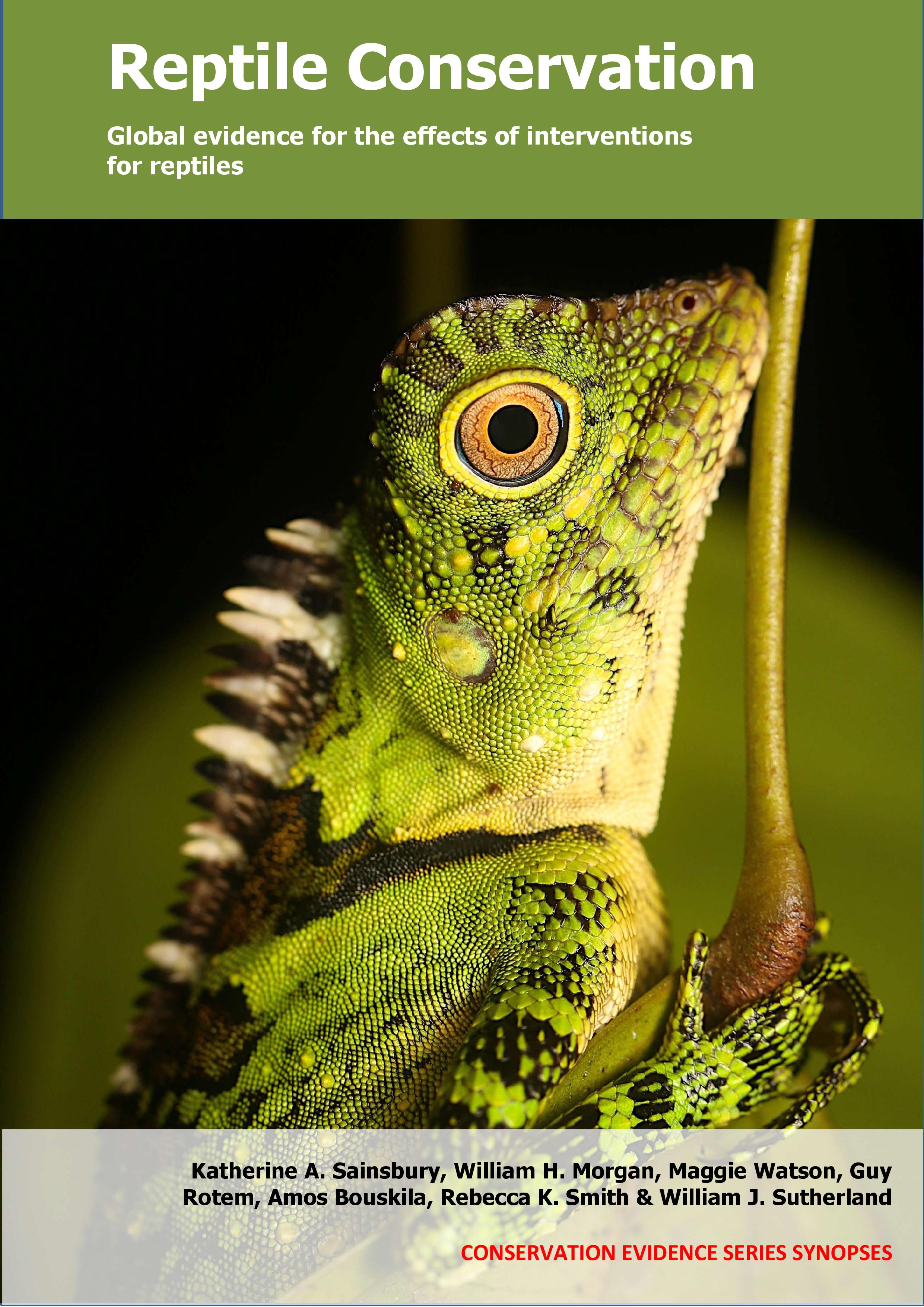Bring threatened wild populations into captivity
-
Overall effectiveness category Awaiting assessment
-
Number of studies: 3
View assessment score
Hide assessment score
How is the evidence assessed?
-
Effectiveness
not assessed -
Certainty
not assessed -
Harms
not assessed
Study locations
Supporting evidence from individual studies
A replicated study in 1990–2007 in three captive facilities on North Island, New Zealand (Keall et al. 2010) found that most wild tuatara Sphenodon punctatus brought into captivity survived and bred. Over 16 years, eight of eight and six of six tuatara from two island populations survived in captivity. In addition, 11 of 15 tuatara from a third island survived and were released back into the wild (the fate of the remaining four is not described) and five of 11 tuatara from a fourth island survived in captivity. Clutches were laid in 13 of 16 years by 15 of 22 females, 44% of eggs hatched (241 of 553 eggs) and second-generation females produced three clutches. In 1990–1992, entire populations of tuatara from four islands were captured (6–15 individuals/island) and placed in one of three captive facilities pending eradication of pacific rats Rattus exulans. Tuatara were housed in predator-proof outdoor enclosures. In 1992–2007, eggs were moved to a separate facility and artificially incubated (see original paper for details). Hatchlings were returned to their source facility after one week to11 months. Hatching success does not include eggs that perished shortly after being laid (5–16 eggs in 2 clutches) and eggs laid by second-generation females.
Study and other actions testedA replicated study in 2004–2016 in three wildlife sanctuaries in the central dry zone of Myanmar (Platt et al. 2017) found that three captive assurance colonies of Burmese star tortoises Geochelone platynota survived at least 12 years in captivity and bred. The total population of three captive assurance colonies of Burmese start tortoises increased from approximately 175 tortoises in 2004 to 7,150 tortoises in October 2016 (≤ 2-years-old: 4,849 individuals; subadults: 1,794 individuals; breeding adults: 501 individuals). Over 12 years, hatching rates were 50–75% (no further details are provided) and total annual number of hatchlings produced increased from 168 individuals in 2008 to 2,142 individuals in 2016. Female hatchlings hatched before 2010 had started laying eggs by 2016. The Burmese star tortoise was considered ecologically and functionally extinct in the wild during the 2000s. In 2004, three wildlife sanctuaries located within the tortoise’s historical geographic range were established as captive assurance colonies using confiscated juvenile, subadult and adult tortoises and some wild tortoises as founding stock (approximately 175 total tortoises of an equal sex ratio). Tortoises were housed in electric-fenced outdoor enclosures with shelter, food and water provided (see original paper for husbandry details). Nesting activity was monitored and eggs incubated and hatched in situ.
Study and other actions testedA replicated study in 2009–2016 in two captive-breeding programmes on Christmas Island and at Taronga Zoo, Australia (Andrew et al. 2018) found that after bringing wild Lister’s geckos Lepidodactylus listeri and Christmas Island blue-tailed skinks Cryptoblepharus egeriae into captivity, populations were maintained successfully in four of four cases. Results were not statistically tested. On Christmas Island, populations of Lister’s gecko grew from 50 in 2012 to 500 in 2016, and populations of blue-tailed skinks grew from 150 in 2012 to 750 in 2016. At Taronga zoo, populations of Lister’s gecko (70 in 2011 and 70 in 2016) and blue-tailed skinks (100 in 2011 and 220 in 2016) remained relatively stable. In 2009, all Lister’s geckos and blue-tailed skinks that could be found on Christmas Island were brought into captivity. From these wild-caught individuals and their offspring, 56 geckos and 83 skinks were transported to Taronga, and the remaining 70 geckos and 109 skinks were maintained at facilities on Christmas Island. Captive management aimed to maximise retention of genetic diversity (see paper for more details).
Study and other actions tested
Where has this evidence come from?
List of journals searched by synopsis
All the journals searched for all synopses
This Action forms part of the Action Synopsis:
Reptile Conservation
Reptile Conservation - Published 2021
Reptile synopsis





)_2023.JPG)














